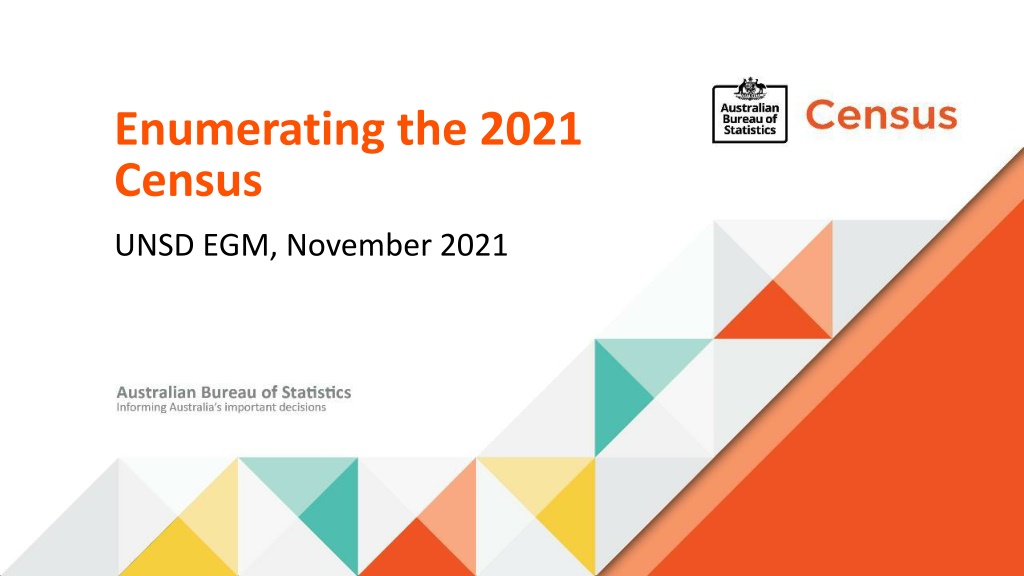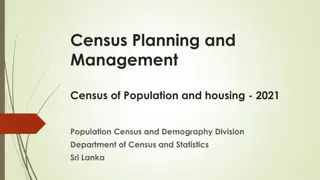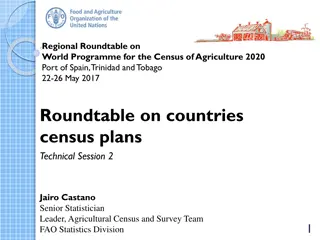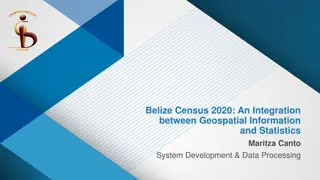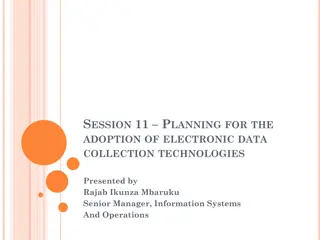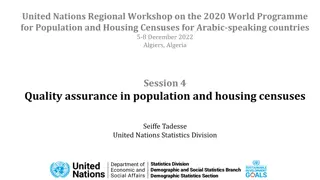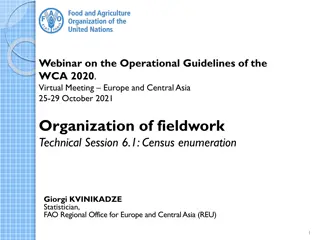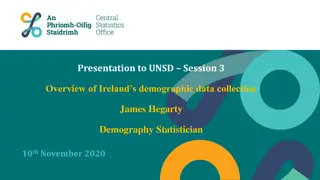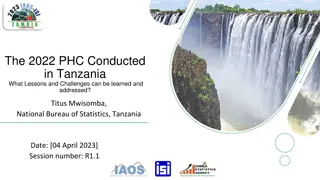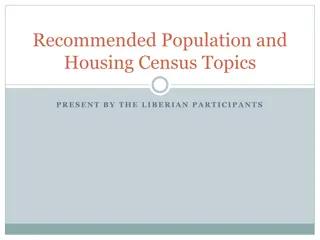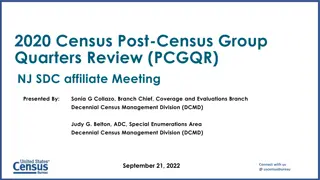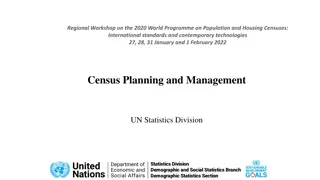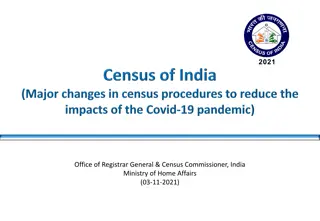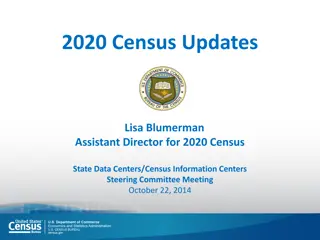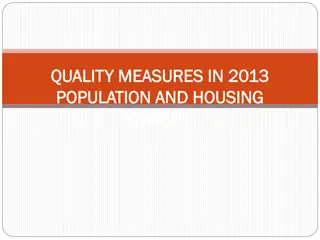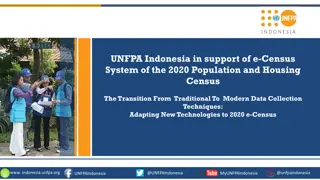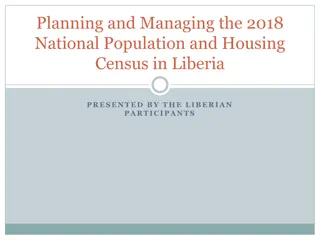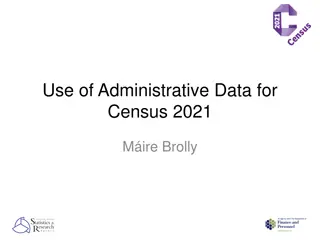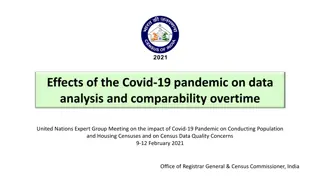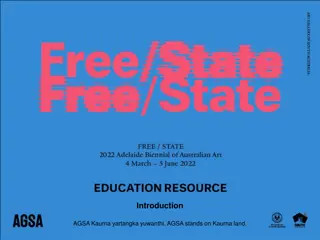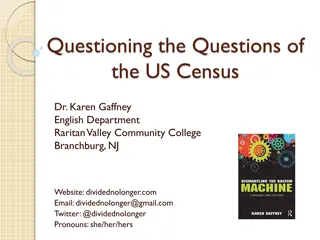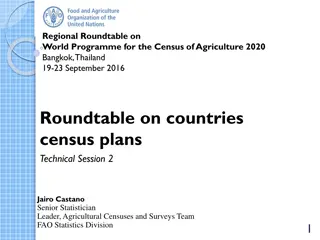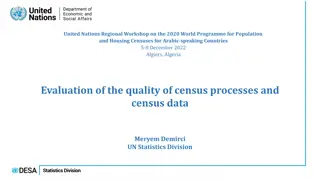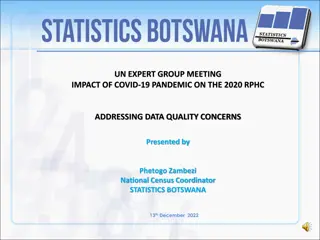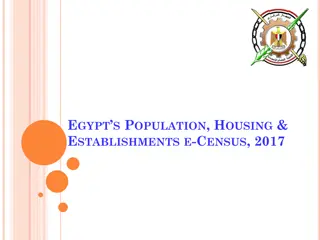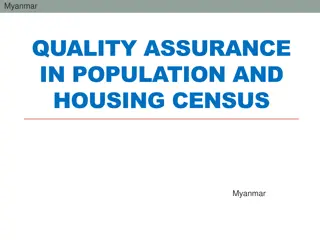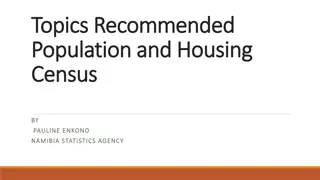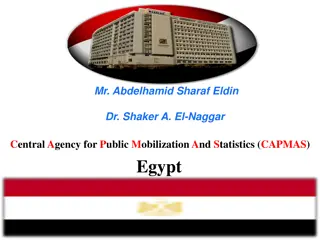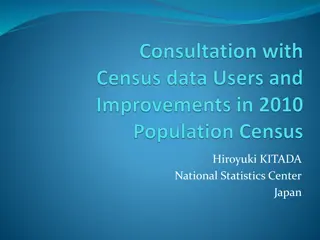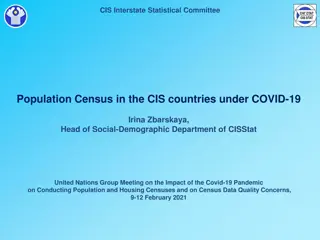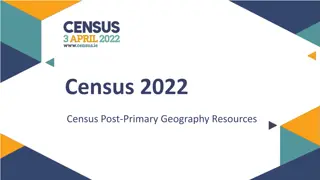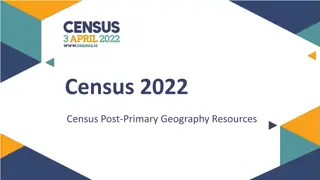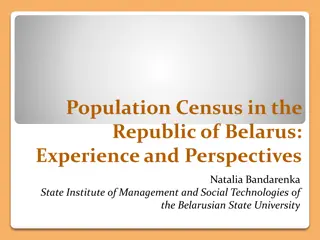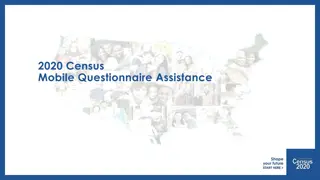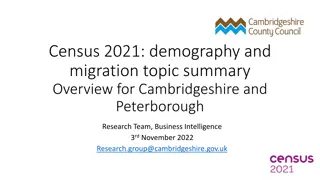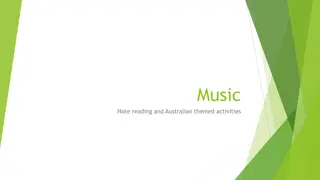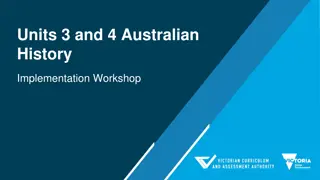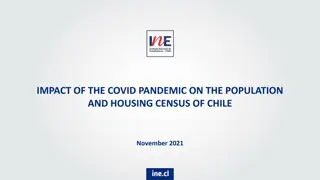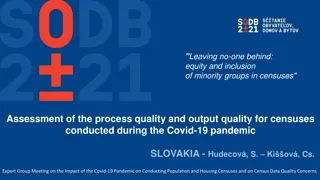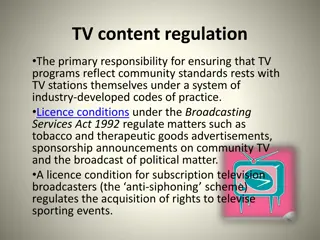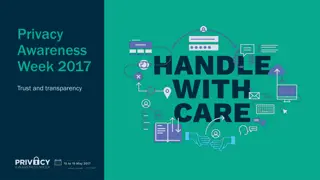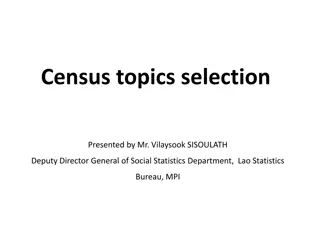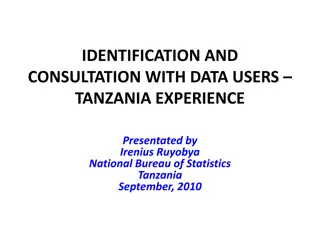Insights into the 2021 Australian Census
The 2021 Australian Census showcased significant changes and challenges, including a digital-first approach with a high online response rate, strategies to reach remote areas, and efforts to ensure accurate enumeration despite lockdown restrictions. With strong early responses and innovative methods like paper forms, the Census exceeded a 95% response rate target. The enumeration timeline detailed the process from August to late September, reflecting a comprehensive nationwide data collection endeavor.
Download Presentation

Please find below an Image/Link to download the presentation.
The content on the website is provided AS IS for your information and personal use only. It may not be sold, licensed, or shared on other websites without obtaining consent from the author. Download presentation by click this link. If you encounter any issues during the download, it is possible that the publisher has removed the file from their server.
E N D
Presentation Transcript
Enumerating the 2021 Census UNSD EGM, November 2021
Census Fast facts Background 2021 Census Strategic outcomes Census night was August 10 2021 Australia runs a 5 yearly de facto Census with form completed by any responsible adult (personal forms available) First Census since 2006 with new content health conditions and service with the Australian Defence Force A digital first Census: nearly 80% of response was online
Census Fast facts Background Very strong early response required change in tactics for non response follow up (a good problem to have) 2021 Census Strategic outcomes Enumeration was undertaken with more than half the population in lockdown substantial changes needed to be made to field work, and enumeration of special populations Enumeration closed 1 October with a few exceptions Overall response rate will exceed 95% target with most sub-targets likely to be met, but with some challenging areas
Participating in the Census People were encouraged to complete online. A letter was delivered to most households with a unique login ID and instructions to complete online. There was also a no login code option available. Paper forms were delivered to households when completing online is less likely to be preferred or possible. A paper form could be easily requested by anyone. Special processes were in place to count people in communities, those experiencing homelessness, and those in institutions such as hospitals and hotels. 4
Census in Australia Remote Area Strategy Mainstream drop-off Mainstream mail-out
Census enumeration timeline People will start receiving their Census instructions. Early August Census Night 10 August People who have not responded receive their first reminder letter Some areas start receiving follow up visits in person Mid - late August People who have not responded receive their second reminder letter Follow up visits increase Early September Remaining non-responders receive a final reminder letter and paper form, delivered in person by Census field staff. Late September
Undertaking a Census during COVID-19 The 2021 Census was designed to be predominantly contact free, although with field follow up of non-responders in late August and September. Around 85% of households received their Census instructions in the mail to complete their Census online or request a paper form. Most other households received a paper form dropped off or delivered to their letterbox The ABS continued to adapt its approach to suit local circumstance throughout operations, including engaging State and Territory Health departments and Police forces to confirm authorised/essential workers status for ABS field staff. 8
Impact of COVID-19 on enumeration Some regions and populations have been more challenging to enumerate than others. Rough sleepers Information on rough sleepers is usually collected through face-to-face interviews. The ABS is tailored its approach across each jurisdiction. For areas in lockdown, the ABS has implemented one of three options: Delay rough sleeper enumeration by up to two weeks. Collect information via observation only Use administrative data in areas where it was not deemed appropriate to have staff in the field at all. Residential Aged Care Facilities and some other facilities The lockdowns placed significant resource constraints on Establishment Officers within residential aged care facilities in assisting residents to complete their Census. Simplified procedures focussed on the provision of a minimum set of data and maximising the time available for aged care facilities to complete and provide this information. 10
Impact of COVID-19 on enumeration In-language Assistance Face to face support options were not possible when an area is in lockdown. Social media messages focused on seeking help from someone known and trusted. "Complete your Census" videos in a number of languages were also recorded and posted on the internet. Remote communities Remote Area enumeration relies heavily on household interviews to capture information. Teams ceased operations during lockdowns. There was ongoing engagement to ensure continued support for Census activities. A small number of communities in Remote New South Wales were unable to be accessed to provide support. Non-response follow up The ABS applied the Census COVIDSafe 3 Step plan in all areas except for Greater Sydney and Greater Melbourne where alternative follow up actions were applied. Occupancy Determination Restricted field operations have presented new and unique challenges to determining occupancy due to the combination of a no contact approach and ways in which expected occupancy has changed due to COVID. 11
What have we learnt? Planning to be flexible and plan for the worst We had plans and tools in place that allowed us to be flexible and responsive to the situation. We had also practiced extensively for various scenarios of things going wrong Following the COVID lockdowns and early response peak, we were able to adapt our plans by: Adjusting our enumeration methods to align with Government restrictions bringing forward planned reminder messaging, as well as using additional reminders stronger language. This drove completion by the final 25% of respondents. 12
2021 Census Quality Assurance UNSD EGM, November 2021
